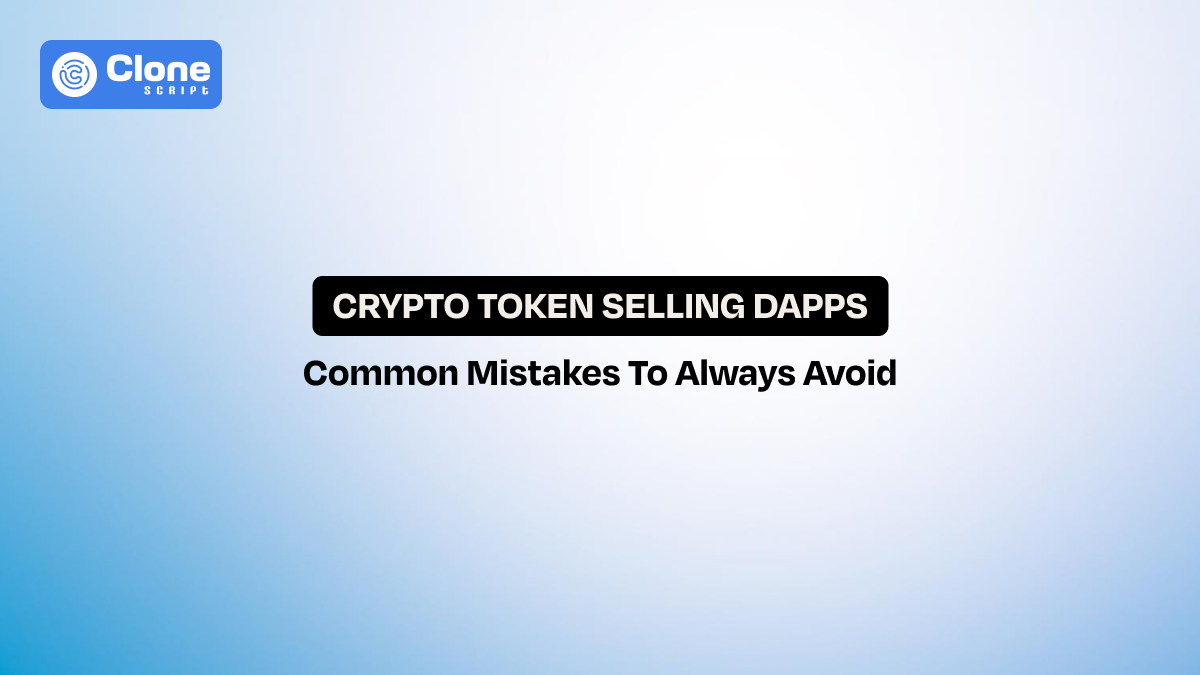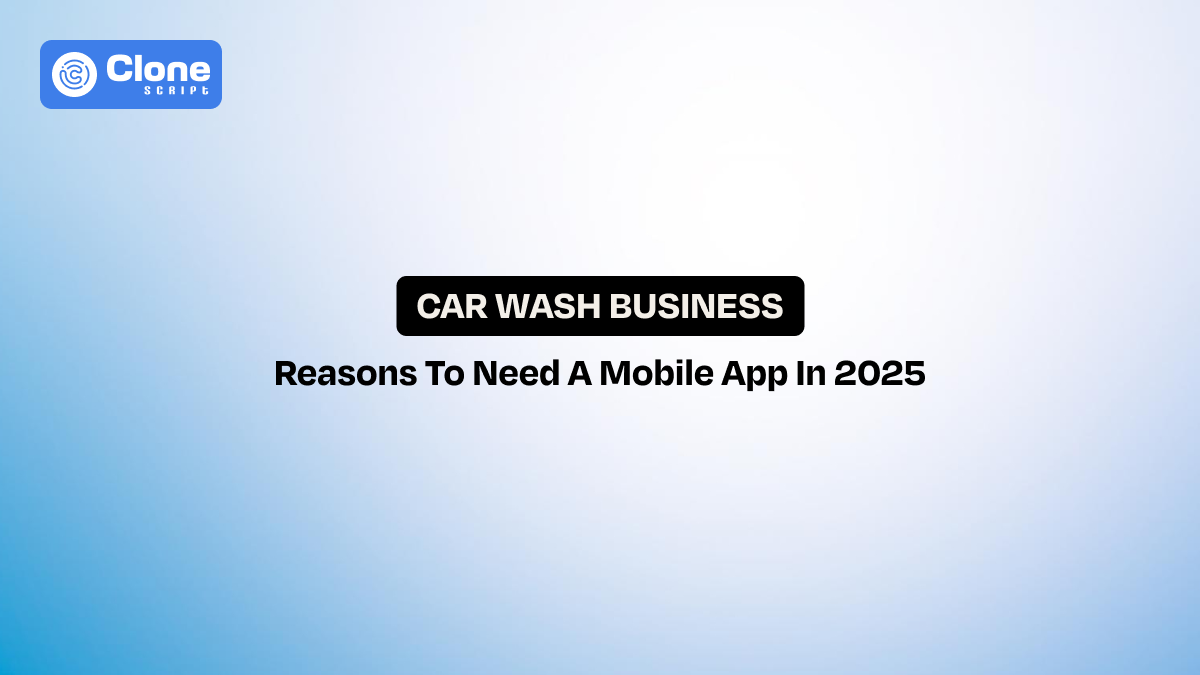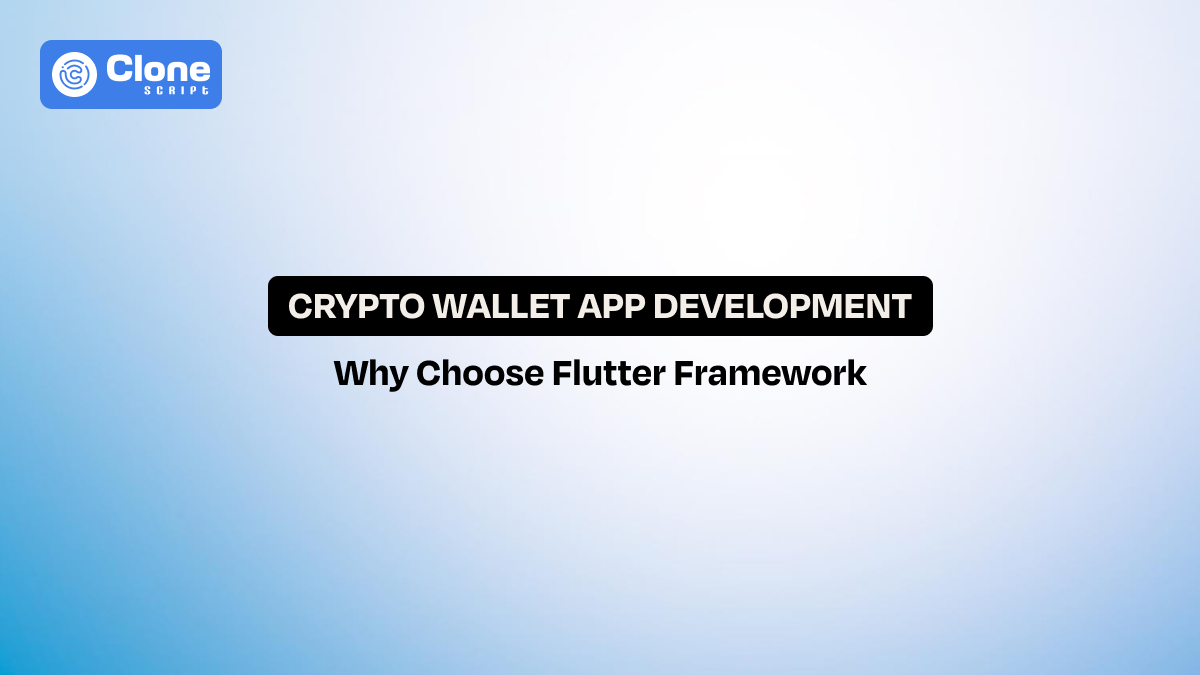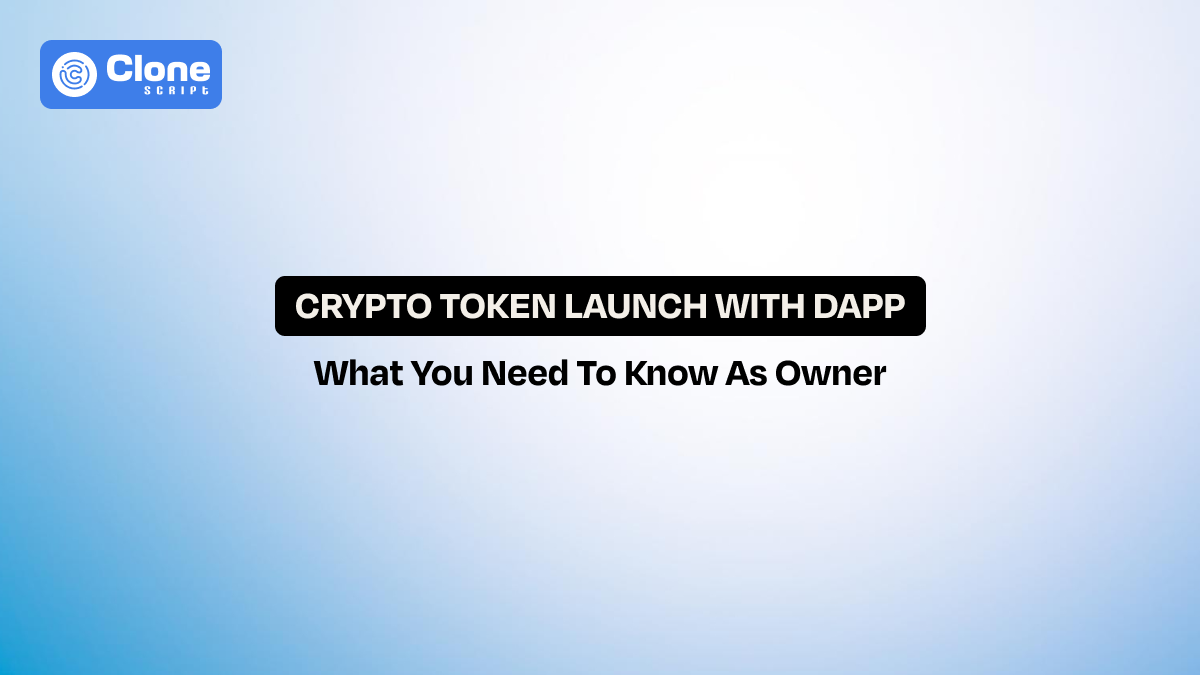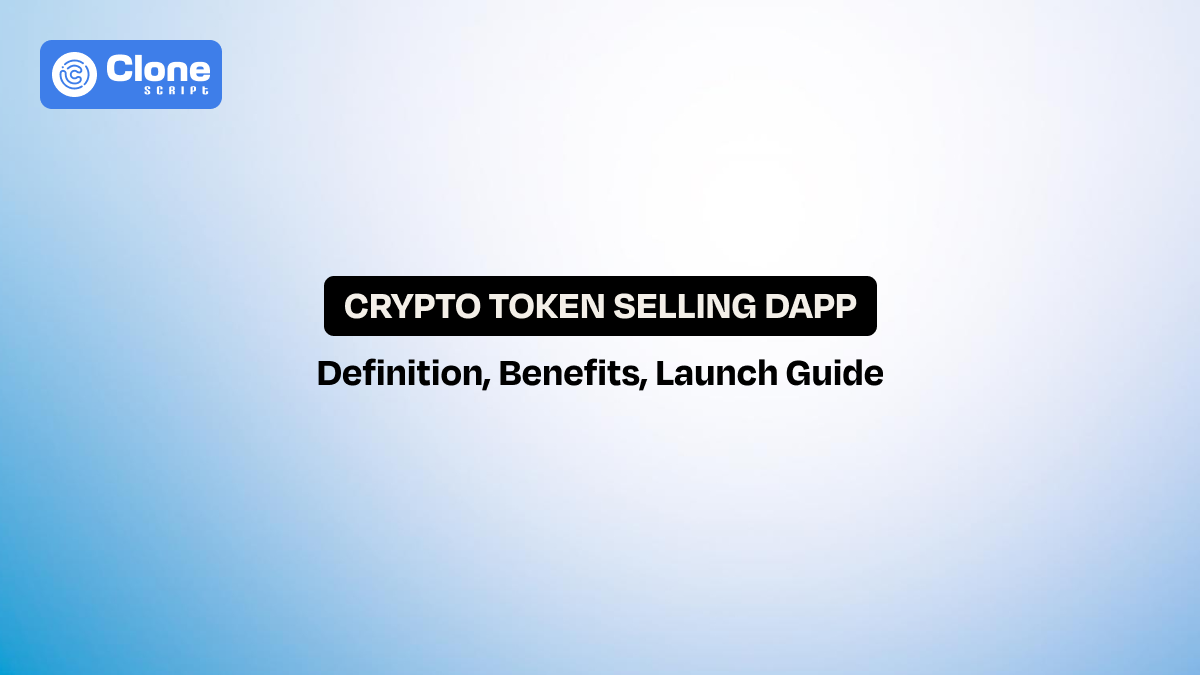8 Common Mistakes to Avoid in Crypto Token Selling DApps
Token-selling DApps are essential for modern crypto fundraising. They let projects run presales, private rounds, and public offerings in a transparent and efficient way. Startups and blockchain projects can reach global investors directly, and the best part is that there is no requirement for traditional intermediaries.
But the mistakes in DApp development cause the token sales to fail. It’s not just because of complex technology. This happens because of the errors in planning, design, and execution.
This guide explains the most common mistakes in token-selling DApps and shows how to avoid them. Preventing these errors helps protect funds, build trust, and ensure long-term success.
Top Mistakes to Avoid in Crypto Token Selling DApps
Understanding the benefits of DApp makes fundraising easy when mistakes are not committed during the development:
1. Skipping Smart Contract Audits
In any token-selling app launch, the smart contract is where everything happens. It decides how tokens are minted, distributed, vested, and even how funds are released. If that code isn’t watertight, it becomes the easiest target for attackers.
The industry has seen too many cases where one overlooked bug wiped out millions within hours of a launch. These incidents all trace back to the same mistake—launching without a proper audit.
Investors today are quick to lose trust if security isn’t proven. Skipping an audit doesn’t just put funds at risk; it signals carelessness. A token sale can’t afford that perception.
How to avoid it:
-
Get audits done by established security firms, not shortcuts.
-
Test contracts under stress and simulated exploits.
-
Publish the audit reports so investors see there’s nothing to hide.
2. Weak or Flawed Tokenomics Design
A token sale depends on its tokenomics. Even with strong technology and marketing, poor economic design will sink a project. Common tokenomics mistakes in token-selling DApps include oversupplying tokens, concentrating too much on team allocations, or failing to create proper vesting schedules. These errors often lead to price crashes, weak liquidity, and a community that feels shortchanged.
During the 2021 bull run, BSC presale projects on launchpads like DxSale and Pinksale became infamous for flawed tokenomics. Many had no vesting schedules for early investors.
As soon as the tokens hit PancakeSwap, insiders dumped massive allocations, triggering instant price crashes of 70–90%. Communities labeled these launches as “pump-and-dumps” or outright rug pulls, even when the project teams had no malicious intent — the core issue was poor tokenomics design.
So, what a good tokenomics all about?
It’s to maintain the balance.
The supply must support growth without encouraging dumping. On the other hand, incentives must reward both early investors and long-term holders.
When the structure is rushed or copied from another project, the DApp risks becoming another short-lived presale with no sustainable market. This is not the ideal thing about successful Web3 projects.
How to avoid it:
-
Create vesting timelines that discourage quick sell-offs.
-
Tie the token supply to real utility within the ecosystem.
-
Design incentives that encourage holding, staking, or active participation in the project.
3. Ignoring Legal & Regulatory Compliance
Legal compliance is one of the most overlooked aspects of crypto token sales, yet it carries some of the highest risks.
Many teams focus heavily on technology and tokenomics. But they are not focusing on the legal frameworks that govern digital assets. This leads to regulatory compliance errors for token sale DApps, such as:
-
Failing to classify tokens correctly
-
Skipping KYC/AML processes
-
Operating in restricted jurisdictions.
The consequences can be severe: fines, forced shutdowns, delistings, or permanent reputational damage.
Even if the crypto token sale DApp functions perfectly, non-compliance creates uncertainty that discourages serious investors from participating. In today’s regulatory climate, no project can afford that risk.
How to avoid it:
-
Work with professional legal entities and individuals who understand crypto regulations across the world.
-
Implement KYC/AML features and terms where it is mandatory by jurisdiction.
-
Stay aligned with evolving frameworks like MiCA, SEC, or local securities laws.
4. Poor UX and Onboarding Experience
A DApp can be secure, compliant, and feature-rich. If users struggle to navigate it, the sale is likely to underperform. Poor UX in crypto token-selling DApps is a recurring issue and includes:
-
Complex wallet integrations
-
Unclear purchase steps
-
Lack of guidance for first-time investors
Even seasoned users abandon a platform if the process feels confusing or unsafe.
Note that, as in a competitive environment, where hundreds of token sales are trying to get attention, user experience becomes a deciding factor. A DApp with confusing onboarding not only loses investors but also risks negative word-of-mouth that damages its credibility.
How to avoid it:
-
Keep the token purchase process simple and intuitive.
-
Offer clear instructions and tooltips inside the platform in an easy manner. Add video tutorials for fast onboarding and feature-related information.
-
Test the flow with both crypto-native users and complete beginners to identify accessibility issues, if any.
In essence, you can prefer a professional app UI and UX design service where things are properly optimized and managed to improve the usability.
5. Choosing the Wrong Blockchain or Ignoring Scalability
The choice of blockchain is very important. It depends on the factors like:
-
High gas fees
-
Network congestion
-
Slow transaction speeds
These can frustrate participants and reduce overall contributions.
Many DApp token sale errors only happen when teams simply follow hype and launch on a popular chain. They don’t consider long-term scalability or the actual needs of their investors.
Another common pitfall is failing to prepare for heavy demand. A token sale that attracts significant traffic can quickly overwhelm infrastructure if scalability was never part of the planning. The result is failed transactions, poor user experience, and lost investor trust.
How to avoid it:
-
Assess different kinds of blockchains for transaction costs, throughput, and ecosystem maturity.
-
Consider Layer-2 solutions or sidechains to balance cost and performance for high traffic during the sale season.
-
Build scalability into the architecture from day one to handle both immediate demand and future growth.
6. Neglecting Liquidity & Market Dynamics
Launching a token is only the beginning. What happens afterward has to be considered. One of the most common crypto token sale mistakes is underestimating the importance of liquidity and market dynamics. A token with no post-sale liquidity leaves investors trapped, unable to trade or exit positions. This loss of confidence can brand the project as a failure, regardless of its fundamentals.
Liquidity should never be an afterthought. Without sufficient depth in trading pools, even small sell-offs can trigger extreme volatility, driving the price down and discouraging long-term participation. In short, market stability is built through careful planning, not wishful thinking.
How to avoid it:
-
Allocate dedicated funds for liquidity provisioning after the sale.
-
Partner with decentralized exchanges (Uniswap, PancakeSwap, dYdX, 1inch, SushiSwap, and Aerodrome Finance)to establish stable trading pools.
-
Introduce incentives, such as staking or farming rewards, to support healthy market activity in early stages.
7. Lack of Community Communication & Engagement
A successful sale for a crypto token isn’t only about technology; it’s also about trust. One of the most damaging token sale errors is neglecting community communication. Having a silent teams, irregular updates, or vague announcements create uncertainty. The uncertainty in crypto usually translates into lost investor confidence.
A community wants to feel informed and valued. When there’s no engagement, even strong projects risk being dismissed as untrustworthy. On the other hand, consistent updates and open dialogue can turn early supporters into long-term advocates who strengthen the ecosystem.
How to avoid it:
-
Share frequent, transparent updates on development and milestones.
-
Use platforms like Telegram, Discord, or Twitter to interact directly with investors.
-
Organize AMAs or Q&A sessions to address concerns and build confidence.
8. No Scalability Planning from Day One
A token sale often attracts more traffic than expected, and without scalability planning, even the most promising DApp can fail under pressure. Among the common mistakes in DApp development, this one is particularly damaging. Crashed servers, failed transactions, and long loading times not only frustrate investors but also leave a lasting negative impression that is hard to repair.
Scalability should never be treated as a “later” concern. If the architecture isn’t built to handle sudden surges in demand, the token sale may stall at the very moment it should be gaining momentum.
How to avoid it:
-
Stress-test the system under simulated high traffic before launch.
-
Deploy infrastructure with elastic scaling to adjust in real time.
-
Integrate decentralized storage and cloud-based solutions that can grow alongside user demand.
Avoiding these costly mistakes can prevent your crypto token sale from being neglected by potential investors and save on budget-draining expenses.
How can our Crypto Token Selling DApp Services Solve These Mistakes?
AllClone Script offers a tailored crypto token selling DApp that helps projects to run presales, ICOs, and IDOs with clarity and control. This solution builds in essential features that directly counter the most common pitfalls discussed earlier:
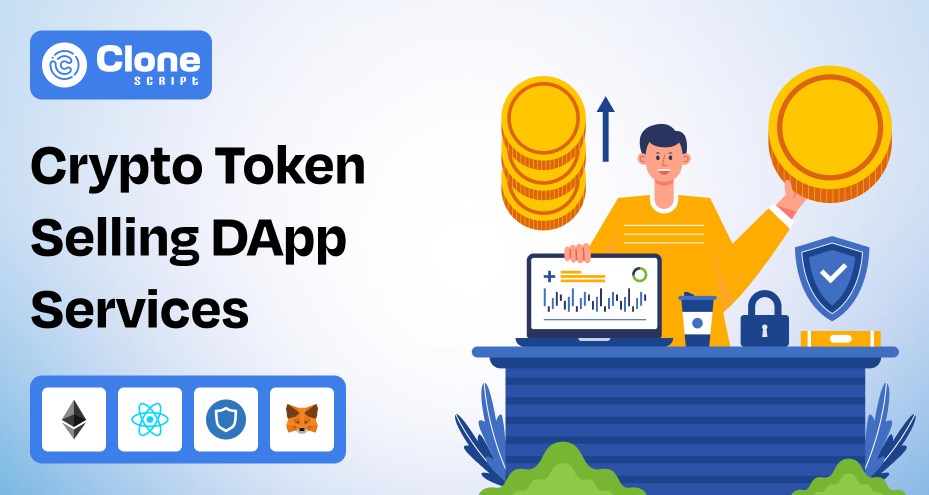
Get Token Selling DApp Service
-
Smart, straightforward code: The DApp comes with clean, modular source code that’s open to audits. It removes barriers to security verification and transparency.
-
Full control over your sale: Teams can configure token allocation, pricing, sale duration, and vesting mechanisms right from the platform. This ensures alignment with tokenomics design and avoiding rushed models.
-
Web3-native integration & multi-wallet support: Built for proper interaction, this DApp supports a wide range of crypto wallets and connects users with a preferred experience. Simply, avoid the poor UX and onboarding barriers that deter investors.
Beyond the functional features, AllClone Script also emphasizes user-centric service. We are offering direct communication, personalized guidance, and flexible customization that DApp aligns with project goals.
Conclusion
Decentralized Applications for crypto token launches offer an efficient way to raise funds. But success depends on avoiding common mistakes. Skipping audits, weak tokenomics, compliance oversights, poor UX, and ignoring scalability can all derail a project before it gains attention. Each misstep erodes investor trust, and in crypto, trust is everything.
The projects that are successful are those built on security, transparent economics, regulatory awareness, and open community engagement. By addressing these areas from the start, a token sale becomes more than just a fundraising event. It becomes the foundation for sustainable growth in the Web3 ecosystem.
FAQs
-
How can scalability issues affect a token sale DApp?
Scalability issues can downgrade a token’s growth and user adoption. If the underlying infrastructure cannot handle increased demand, it may lead to slow transactions, high fees, or system crashes. Test that your platform is built to scale from the outset to support long-term success.
-
What UX mistakes should be avoided in crypto token-selling DApps?
Complex onboarding, confusing wallet integrations, unclear purchase steps, and a lack of guidance for new users are the main UX pitfalls. A simple, intuitive flow encourages participation and investor confidence.
-
What are the security risks in decentralized applications?
Security risks include smart contract vulnerabilities, hacking, phishing attacks, and improper fund handling. To mitigate these issues, it requires audits, tested contracts, and secure deployment practices.
-
Why is wallet integration ideal in a token sale?
Multi-wallet support improves user adoption and reduces transaction errors that can prevent user frustration and lost sales. Integrate Metamask, Phantom, and Coinbase Web3 wallets.
-
How does token utility affect investor confidence?
Tokens with clear utility within a platform or ecosystem encourage long-term holding. This enhances adoption and reduces speculative dumping.
 BTC - Bitcoin
BTC - Bitcoin
 USDTERC20 - USDT ERC20
USDTERC20 - USDT ERC20
 ETH - Ethereum
ETH - Ethereum
 BNB - Binance
BNB - Binance
 BCH - Bitcoin Cash
BCH - Bitcoin Cash
 DOGE - Dogecoin
DOGE - Dogecoin
 TRX - TRON
TRX - TRON
 USDTTRC20 - USD TRC20
USDTTRC20 - USD TRC20
 LTC - LiteCoin
LTC - LiteCoin

